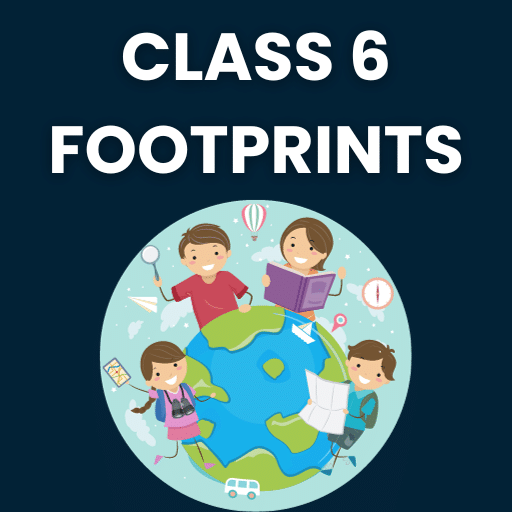Textbook Solutions: Maps and Map Reading | Footprints Class 6: Book Solutions, Notes & Worksheets PDF Download
I. Tick (✔) the correct option.
1.
Ans: (b)
Political maps focus on showing boundaries, countries, and states, not the distribution of crops or the direction of cities.
2.
Ans: (c)
Physical maps display landforms like mountains, plains, deserts, etc.
3.
Ans: (b)
Thematic maps are designed to show specific themes, such as population density.
4.
Ans: (c)
The scale provides a relationship between the distances on the map and the actual distances on the ground.
5.
Ans: (a)
Maps can be classified based on the scale, with large-scale maps showing smaller areas in more detail.
6.
Ans: (c)
The key or legend provides information about the symbols used on the map.
7.
Ans: (c)
West is one of the cardinal directions, not an intermediate point.
8.
Ans: (b)
The north line assists in determining other main directions on the map.
9.
Ans: (b)
Plans are accurate drawings of areas, drawn to scale.
10.
Ans: (b)
Plans provide accurate details and are suitable for showing layouts of specific areas like hospitals.
II. State whether the following statements are true or false. Rewrite the statements to correct them.
1.
Ans: True.
2.
Ans: False.
A small-scale map shows a large area but is reduced in detail.
3.
Ans: False.
The north line helps determine all directions on the map.
4.
Ans: False.
The four main directions are called cardinal points; intermediate points are the directions in between them.
5.
Ans: False.
A plan is an accurate drawing, not a rough layout.
III. Answer the following questions in brief.
1.
Ans: A cartographer is a person who makes maps.
2.
Ans: Two disadvantages of using globes are:
- It is not possible to show details of a smaller area, such as a village.
- Detailed information about landforms, climatic conditions, and various other aspects related to land cannot be provided.
3.
Ans: The different types of maps are political maps, physical maps, and thematic maps.
4.
Ans: The legend of a map, also known as the index, gives the key to the symbols used on the map, helping to interpret and understand the map.
5.
Ans: Conventional symbols are standard signs and symbols that are internationally accepted to depict certain features and characteristics on maps.
 |
Download the notes
Textbook Solutions: Maps and Map Reading
|
Download as PDF |
IV. Answer the following questions in detail.
1.
Ans: Maps help us in the following ways:
- Provide detailed information about the Earth.
- Guide navigators and flight pilots to fix their location.
- Assist town planners in planning and showing the layout of a town or city.
2.
Ans: The scale of a map is the proportion or ratio between the distance on a map and the corresponding distance on the ground or the Earth's surface. It expresses how much a certain distance on the map represents in the actual world.
3.
Ans: Large-scale maps show a smaller area with more detail, where a small distance on the map represents a short distance on the ground. Small-scale maps, on the other hand, show a larger area with less detail, and a small distance on the map represents a larger distance on the ground.
4.
Ans: We need the cardinal points (North, South, East, West) and the north line on a map to determine directions. The north line helps establish the orientation of the map, and from there, the other three main directions (East, South, West) and the intermediate points can be determined.
5.
Ans: Sketches are useful because they provide a quick and rough idea of the layout of an area or show routes and locations. While not drawn to scale, sketches are handy for conveying information informally, such as giving directions or illustrating a general layout.
|
65 videos|125 docs|25 tests
|
FAQs on Textbook Solutions: Maps and Map Reading - Footprints Class 6: Book Solutions, Notes & Worksheets
| 1. How can maps help in understanding geographical features and locations? |  |
| 2. What are the different types of maps used for map reading? |  |
| 3. How can one determine directions using a map? |  |
| 4. Why is it important to understand symbols and legends on a map? |  |
| 5. How can scale and distance be measured on a map? |  |






























